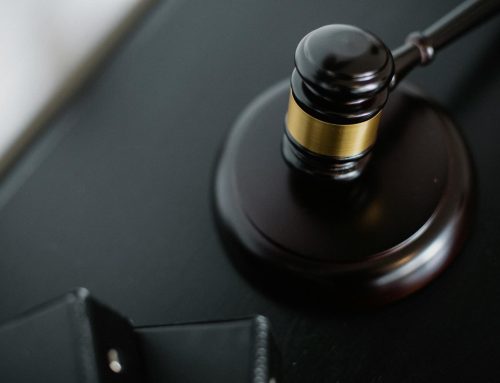Viviane Falzon is the Head of Complex Management Liability Claims at Ironshore /Liberty Mutual Insurance Co. Viviane has been with Liberty since October 2016 in her current role. She has 30 years’ experience in the insurance industry and is licensed attorney with diversified claims and underwriting experience in domestic and international Financial Lines and Specialty insurance products, including Directors and Officers, Investment Managers and Financial Institutions, Professional Errors and Omissions, Employment Practices Liability, Pension Trust Fiduciary Liability, Crime and Fidelity, Cyber Crime and Liability, Representations and Warranties, Surety, and Construction Risk policies.
Scott A. Schechter is a partner at Kaufman Borgeest & Ryan LLP and has been with the firm since 2001. Scott’s practice concentrates on representing international and domestic insurers in all aspects of claims handling and coverage litigation, particularly in the areas of Directors and Officers Liability, Financial Institutions Liability (with an emphasis on banking, private equity, hedge funds, venture capital, and investment advisers), and Professional Liability. Scott also defends individuals and companies in professional liability and commercial litigation.
Joshua A. DiLena is a partner at Kaufman Borgeest & Ryan LLP and has been with the firm since 2010. Joshua’s practice focuses on Management and Professional Liability involving financial institutions, particularly private equity firms; and also includes the areas of public and private Directors and Officers Liability, Errors and Omissions, and Fiduciary Liability. Joshua represents insurers in all aspects of the claims handling process, as well as coverage litigation.
Matthew E. Mawby Is a partner at Kaufman Borgeest & Ryan LLP and has been with the firm since 2015. Matt’s practice focuses on complex coverage litigation and arbitration, particularly in the areas of Financial Institutions Liability, Directors and Officers Liability, Professional Liability, and Employment Practices Liability. Matt also counsels international and domestic insurers in all aspects of claims handling and resolution of coverage disputes. Matt also defends individuals and companies in commercial litigation and arbitration.
Andrew S. Paliotta is an associate attorney at Kaufman Borgeest & Ryan LLP and has been with the firm since 2018. Andrew’s practice concentrates on representing international and domestic insurers in insurance coverage matters and coverage litigations/arbitrations involving Directors and Officers Liability, Employment Practices Liability, Errors and Omissions, and Professional Liability claims. Andrew also represents commercial entities in arbitration and litigation in both state and federal court in professional liability actions and various commercial and construction claims.
This post is Part Two of this article. Part One is available here, and Part Three will be available on the PLUS Blog tomorrow.
IV. Unprecedented Bankruptcies
The COVID-19 pandemic and resulting societal shifts in the “norm” have had a devastating impact on businesses in the retail and hospitality spaces. People around the world were quarantined in their homes for months and unable to patronize these businesses and have experienced a complete change in the way they lived their lives. There were 630 corporate bankruptcies filed in 2020, a 9% increase compared to 2019 and the largest number since 2010;[1] and over 40 of these bankruptcies involved companies with over $1 billion in debt.[2]
In some spaces, such as brick and mortar retail, the pandemic may merely be the final nail in the coffin for those businesses who have been facing declining sales due to the rise of e-commerce for years such as once retail giant Neiman Marcus (owned by a consortium including PE firm Ares Management) and J. Crew (owned by TPG Capital and Leonard Green & Partners)[3]. Further, a shift to “working from home” for many people around the globe for an unknown period of time has led to “business-wear brands” — practically unessential due to working from home — also filing for bankruptcy including Tailored Brands (Men’s Warehouse), Brooks Brothers and Ascena Retail Group, which owns Ann Taylor and Lane Bryant.[4]
In addition, with state and local governments having implemented bans on dining inside of restaurants across the country, over ten restaurant chains or operators of franchises have filed for bankruptcy since April 2020, including NPC International (the second largest franchise operator in the United States which operates over 1,600 Pizza Hut and Wendy’s chains), California Pizza Kitchen, Ruby Tuesday, Friendly’s Restaurants and Sizzler.[5] Even with some states and cities moving to re-open indoor dining, or have already done so, people are still hesitant to patronize restaurants as they did pre-COVID, which may lead to additional bankruptcies.
Bankruptcies have always been a source of D&O claims brought on behalf of the debtor’s estate (by creditors or the trustee), and the pandemic may only increase claims brought against bankrupt entities’ directors, officers or shareholders. These claims could include allegations of mismanagement, breach of fiduciary duties and corporate waste, including against PE firms that took dividends from struggling portfolio companies. For insurers, an examination of the “Insured v. Insured” exclusion, which generally bars claims brought by or behalf of an Insured Organization, in D&O polices may be prudent at this time. While most I v. I exclusions contain a carve-back for actions brought by the Bankruptcy Trustee, Receiver or Liquidator, the identity of the persons or entities on whose behalf the underlying claim is being prosecuted can be confusing in the bankruptcy context as well as whether they fall within the carve-back. One recent case on this issue is Westchester Fire Insurance Co. v. Schorsch et al., 2020 WL 4905056 (N.Y. App. Div. 1st Aug. 20, 2020). In Schorsch, a creditor trust commenced an action against the debtor’s directors and officers, alleging that they had breached their fiduciary duties. The insurer denied coverage based on the policy’s insured vs. insured exclusion and the insured sued alleging the carve-back provided coverage for claims “brought by the Bankruptcy Trustee or Examiner of the Company or any assignee of such Trustee or Examiner, or any Receiver, Conservator, Rehabilitator, or Liquidator or comparable authority of the Company.” Id. at *3. The Appellate Division, First Department in New York found that the carve-back restored coverage excluded by the I v. I exclusion, holding that “when read together, the bankruptcy exception restores coverage for bankruptcy-related constituents, such as the bankruptcy trustees and comparable authorities, and the insured vs. insured exclusion precludes the possibility of a lawsuit by a company as Debtor in Possession, or by individuals acting as proxies for the board or the company [and]… the D & O claims are prosecuted by the post-confirmation Creditor Trust, a separate entity” Id. at 6; and that “by including the undefined and open-ended phrase “comparable authority” into the D & O policy’s bankruptcy exception, the parties created a broadly applicable exception with no clear limiting principles other than that there should be no coverage where the D & O claims are prosecuted by the DIP or by individuals acting as proxies for the board or the company.” Id. at 8. As such, underwriters should be wary of including broad phrases such as “comparable authority” in policy clauses especially in the bankruptcy context where the identity of claimants can take many different forms, and in a post-COVID 19 world where an “explosion” of bankruptcies, including those that may not occur for several months, are likely on the horizon.
V. Unraveling of Previously Negotiated Deals in the Wake of COVID-19
What may have looked like a good business opportunity for PE firms in late 2019 or even early 2020 changed once the full effect of the COVID-19 pandemic and resultant shutdowns began to be realized. This is especially true for certain mergers and acquisitions, three of which have recently been in the headlines. In May 2020, the Carlyle Group, Inc. and GIC Pte. Ltd. backed out of their plans to purchase a stake in American Express Global Business Travel[6] as the pandemic wreaked havoc on the airline and hotel industry, with government shutdowns leading to airlines having to cancel flights and hotels needing to close. In April 2020, COVID-19 led to a breakdown of a plan between L Brands and PE firm Sycamore Partners to take retailer Victoria’s Secret private. This breakdown led to a series of lawsuits being filed in Delaware by Sycamore Partners which alleged that L Brands’ decision to close down stores, furlough employees and forgo rent payments violated the merger agreement between the two parties, before the two parties agreed to cancel the deal.[7]
These two examples are dwarfed by the $16.2 billion acquisition of jeweler Tiffany & Co. by Moët Hennessy Louis Vuitton SE (“LVMH”), where LVMH filed suit in Delaware to void the agreement. LVMH alleged that mismanagement by the Board of Tiffany & Co. during the pandemic, including the decision by Tiffany & Co. to pay its full dividend throughout the pandemic, have made the merger deal invalid.[8] While LVMH and Tiffany & Co. ultimately resolved the dispute through a modification of the merger consideration, the allegations raised in LVMH’s are instructive as to how such claims may proceed in the future.
At issue in the action between LVMH and Tiffany & Co. was whether or not the alleged mismanagement during the COVID-19 pandemic has triggered the “material adverse event” (“MAE”) clause in the merger agreement. A MAE clause is “included within the closing conditions of an acquisition agreement in order to provide purchasers with an ’out’ in the event of unforeseen material adverse business or economic changes affecting or involving the target company or assets between the execution of the definitive acquisition agreement and the consummation of the transaction.”[9] Like the debate over whether the COVID-19 pandemic constitutes a force majeure event in contracts, whether or not the pandemic, and a business’ actions or inactions in response to same, constitutes a MAE to cancel a deal is a novel issue. However, Delaware, which has jurisdiction over the LVMH/Tiffany & Co. dispute, has only once before allowed a company to withdraw from a deal based on a MAE. In Akorn, Inc. v. Fresenius Kabi AG, 2018 WL 4719347 (Del. Ch. 2018), judgment aff’d, 2018 WL 6427137 (Del. 2018), the Delaware Chancery Court upheld the termination of the merger agreement finding that Akorn breached its representations in the merger agreement regarding regulatory obligations which the court found would take several years and millions of dollars to remedy, which constituted a MAE. In the 2019 decision in Channel Medsystems, Inc. v. Boston Scientific Corporation, 2019 WL 6896462 (Del. Ch. 2019), the Delaware Chancery Court cited again to the Akorn decision reiterating that “the important consideration therefore is whether there has been an adverse change in the target’s business that is consequential to the company’s long-term earnings power over a reasonable period, which one would expect to be measured in years rather than months. Id. at 25 (emphasis added). While LVMH and Tiffany & Co. decided to avoid litigation, and the question of a MAE, the impact was not inconsequential; the companies decided to lower the valuation of Tiffany & Co. by approximately $400 million and reduce the stock sale price from $135 to $131.50. Whether the effects on a company’s business due to the pandemic will last years rather than months (or at least more months than have already passed) still remains to be seen, but it is an important issue to follow in the area of M&A.
VI. Increase in Secondaries Fund Activities
As a general matter, investments in private equity funds are illiquid, primarily designed to be held for the duration of the lifetime of the fund (10-15 years). Given the private nature of the offering, there is no public market to freely trade the limited partnership interests in the funds; and the limited partnership agreements typically impose transfer restrictions in order to maintain compliance with the exemptions from registering the securities. That being said, a number of fund managers have formed private equity secondary funds (or secondaries), which are designed to acquire interests in existing funds from limited partners seeking an early exit. In such a situation, the secondary fund acquires the selling limited partner’s interest in the existing fund, while also assuming its obligations, including the obligation to satisfy unfunded capital commitments. These secondaries transactions can also be led by the underlying general partners of the primary funds, particularly in the context of a restructuring where they may be seeking to extend the lifetime of the funds.[10]
While secondary funds have been around for some time, there has been an uptick in secondaries fundraising and secondaries deal flow in recent years. In this regard, between 2008 and 2017, secondaries fundraising increased from approximately $7 billion to $37 billion in 2017.[11] While fundraising dipped in 2019 (to $26 billion),[12] secondaries deal volume reached an all-time high of $88 billion that year after steadily increasing from $58 billion in 2017 and $74 billion in 2018.[13]
The COVID-19 pandemic has impacted the secondaries market in two measurable ways to date. First, there has been a marked increase in secondaries fundraising, with first half 2020 totals ($44 billion) already exceeding the full year totals for 2019, and with funds available for investment (or dry powder) increasing to $125 billion at the end of June 2020.[14] (As of printing, results from second half 2020 have not been publicly reported.) In this regard, it is anticipated that the financial impact of the pandemic will lead limited partners to seek an exit in order to obtain liquidity, bolstering the market for secondaries fund investments. In addition, secondaries deals led by the general partners of the underlying private equity funds are also expected to increase, particularly with respect to older vintage funds who may seek additional time to wind-down – avoiding the sale of their underlying portfolio whose value was likely adversely affected by the pandemic – while obtaining liquidity for their limited partners who want to divest (or with respect to newer vintage funds, avoid ongoing capital commitments).[15]
Second, notwithstanding the increased demand for investment in secondaries funds and record fundraising in the first half of 2020, the deal volume has decreased. The transaction volume in the first half of 2020 was $18 billion, with certain estimates for the full year of between $40 billion and $50 billion (which would reflect a marked decrease from the record $88 billion in 2019).[16] The volume reduction does not appear to be based upon an under-supply of transaction opportunities, but rather a cautious approach by secondaries fund managers waiting to obtain current valuations of portfolio assets reflecting the impact of the pandemic.[17]
It is likely too early to speculate regarding the potential claims activity involving secondaries transactions that may arise; and the apparently cautious approach taken by secondaries fund managers (broadly) is certainly a positive sign. Historically, we are not aware of significant litigation arising out of secondaries fundraising or secondaries transactions. However, issues surrounding valuation of portfolio investments – particularly where such valuations are used in connection with the solicitation of fund investments – have come under scrutiny in the past. Given the uncertainties created by the COVID-19 impact on underlying portfolio companies, valuations provided to secondaries funds in connection with secondaries market transactions could be a source of future disputes.
The first part of this article is available here, and this article will be concluded in a following post.
[1] https://www.spglobal.com/marketintelligence/en/news-insights/latest-news-headlines/slowdown-in-us-corporate-bankruptcies-continues-as-covid-19-recovery-looms-62931408
[2] https://www.spglobal.com/marketintelligence/en/news-insights/latest-news-headlines/us-corporate-bankruptcies-end-2020-at-10-year-high-amid-covid-19-pandemic-61973656
[3] https://www.wsj.com/articles/coronavirus-unravels-private-equity-playbook-for-some-retailers-11589115600
[4] https://finance.yahoo.com/news/a-scary-number-of-retail-companies-are-facing-bankruptcy-amid-the-coronavirus-pandemic-180604964.html
[5] https://www.nbcnews.com/business/consumer/which-major-retail-companies-have-filed-bankruptcy-coronavirus-pandemic-hit-n1207866
[6] https://www.wsj.com/articles/deals-are-being-dropped-as-buyers-turn-wary-during-the-pandemic-11599829200
[7] https://www.cnbc.com/2020/04/22/sycamore-partners-tries-to-get-out-of-deal-to-take-over-victorias-secret.html
[8] https://www.wsj.com/articles/lvmh-says-tiffanys-handling-of-pandemic-invalidates-deal-11599744782
[9] Joseph B. Alexander, Jr., The Material Adverse Change Clause, Prac. Law., October 2005, at 11.
[10] https://docs.preqin.com/reports/Preqin-GP-Led-Secondary-Transactions-November-2016.pdf
[11] https://www.preqin.com/insights/research/blogs/a-record-year-for-private-equity-secondaries-fundraising
[12] Preqin Secondary Market Update H1 2020.
[13] https://www.commonfund.org/research-center/articles/private-capital-secondaries-an-overview
[14] https://www.preqin.com/Portals/0/Documents/About/press-release/2020/Aug/SEC-H1-2020.pdf?ver=2020-08-12-141905-610
[15] https://www.penews.com/articles/gp-led-secondaries-to-increase-in-post-covid-19-resurgence-20200706
[16] https://www.commonfund.org/research-center/articles/secondaries-opportunity
[17] Id.
Neither Ironshore nor any other Liberty Mutual company (the “Insurer”) are engaged in the practice of law. The foregoing information is for informational purposes only. It is not a substitute for legal advice from a licensed attorney, nor does it create an attorney-client relationship. The Insurer disclaims all liability arising out of this resource.
This document provides a general description of this program and/or service. Not all insurance coverages or products are available in all states or regions and policy terms may vary based on individual state or region requirements. See your policy, service contract, or program documentation for actual terms and conditions. Some policies may be placed with a surplus lines insurer. Surplus lines insurers generally do not participate in state guaranty funds and coverage may only be obtained through duly licensed surplus lines brokers.





Leave a Reply